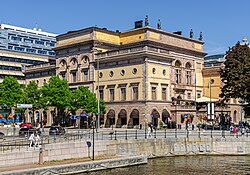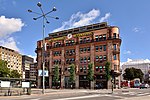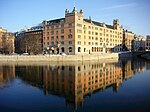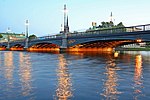Ministry of Employment (Sweden)
The Ministry of Employment (Swedish: Arbetsmarknadsdepartementet) is a ministry in the Swedish government responsible for labour market, labour law and the work environment. The Ministry is also responsible for the work of advancing gender equality and human rights at national level. Moreover, the Ministry is responsible for efforts to increase integration, combat segregation, racism and discrimination, and strengthen the rights of children and LGBT people. The Swedish Ministry of Employment has two ministers as of November 2021. The Minister for Employment and Gender Equality, Eva Nordmark, is head of the Ministry. Johan Danielsson is Minister for Housing and Deputy Minister for Employment.[1] The ministers also have political advisers on staff who assist them in policy work, providing background material, political assessments, planning and coordination, and media contacts. The Ministry has an Office of the Director-General for Administrative Affairs, two secretariats and six divisions, which are led by non-politically appointed officials.[2]
Excerpt from the Wikipedia article Ministry of Employment (Sweden) (License: CC BY-SA 3.0, Authors).Ministry of Employment (Sweden)
Karduansmakargatan, Stockholm Norrmalm (Norrmalms stadsdelsområde)
Geographical coordinates (GPS) Address Website Nearby Places Show on map
Geographical coordinates (GPS)
| Latitude | Longitude |
|---|---|
| N 59.329208333333 ° | E 18.064022222222 ° |
Address
Finansdepartementet
Karduansmakargatan
101 23 Stockholm, Norrmalm (Norrmalms stadsdelsområde)
Sweden
Open on Google Maps






